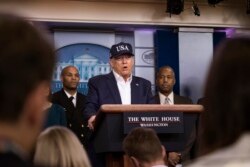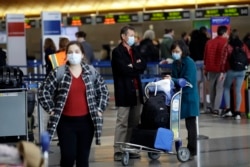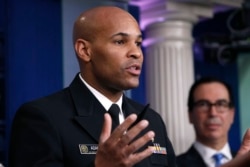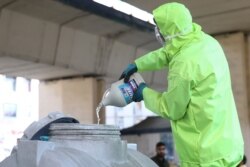Spain announced Saturday that it would severely limit the movements of its 46 million people to try to contain the coronavirus pandemic spreading in Europe.
Madrid said it would employ steps similar to those Italy took in locking down its country for two weeks. Spanish Prime Minister Pedro Sanchez, in announcing the measures, said that starting immediately, residents would be allowed to leave their homes only to buy food or medicine, to go to work, to find medical care or to help care for the young or elderly.
Hours after the announcement, Sanchez's office announced his wife, Begona Gomez, had tested positive for the virus.
Spanish officials said that as of Saturday, there were more than 5,700 confirmed COVID-19 cases in the country, an increase of 1,500 in 24 hours. The death toll was at 136. Spain had the fifth-highest number of cases globally, after China, Italy, Iran and South Korea.
France also announced new restrictions to contain the virus. Officials had already closed major tourist attractions — the Eiffel Tower and the Louvre — but starting Sunday, most other places where people would gather — restaurants, cinemas, nonessential retail — will be closed as well. France had recorded about 3,600 confirmed cases of coronavirus and 91 deaths as of Saturday.
The United States on Saturday expanded its travel ban with Europe to include the United Kingdom and Ireland.
U.S. restrictions?
In a press briefing Saturday with the White House coronavirus task force, President Donald Trump said he was considering restricting travel within U.S. borders as well, especially from certain areas of concern.
Trump’s declaration Friday of a national emergency prompted the U.S. Defense Department to stop all domestic travel for military service members and their families effective Monday through May 11.
Senior officials with the Department of Homeland Security said Saturday that there were no current plans to restrict domestic travel.
U.S. nationals and permanent residents who are returning from countries that are part of the ban will be required to undergo additional screening and questioning to determine if they can return to their communities, the officials said. If not required to seek medical help, they will be sent home and will spend two weeks in self-quarantine.
Foreign nationals living in the U.S. who have traveled to countries included in the ban, however, will not be allowed to return to the United States. DHS said they would have to travel to a third country, not included in the ban, and wait out the two-week period of self-quarantine before traveling to the U.S.
Trump said that he had been tested for the virus and was awaiting results. Hours later, his personal physician, U.S. Navy Commander Sean Conley, released a memo that said Trump had tested negative for the virus. Vice President Mike Pence, who heads the task force, said he would consult with the White House physician about whether to take the test.
Temperature checks
The White House said it was conducting temperature checks on anyone in close contact with Trump or Pence. Before the Saturday press briefing, a member of the White House physician’s office took the temperature of each journalist in the briefing room, marking a change in practices because of a concern that the president and his staff have been in contact with infected individuals.
Earlier Saturday, the House approved legislation to provide direct relief to Americans suffering physically, financially and emotionally from the coronavirus pandemic, and Trump threw his support behind the congressional aid package. The Senate will consider the bill Monday.
The emergency package includes funds to support small- and medium-sized businesses faced with increased costs from sick leave, as well as individuals incurring loss of income from quarantines or reduced economic activity.
Central to the president’s emergency measures is the expansion of testing for coronavirus. The United States has been criticized for its slow rollout of coronavirus test kits, and Trump has pledged to accelerate the testing capacity, including by setting up drive-through testing sites.
The director of the National Institute of Allergy and Infectious Diseases, Dr. Anthony Fauci, cautioned that the situation would continue to worsen despite the increased efforts.
“We have not reached our peak. We will see more cases, and more deaths among the more vulnerable,” Fauci said, adding that there was hope and a challenge to “influence the curve” by bringing down the rates of infection.
First New York death
The United States had 2,226 confirmed coronavirus cases and 51 deaths from the disease. New York state, which instituted a containment zone around a cluster of infections in New Rochelle, on Saturday reported its first death from COVID-19.
Fauci stressed the need to practice social distancing in order to lower rates of spread and allow health practitioners to gain control of the situation.
The president has come under repeated criticism for downplaying the risk of infection and the threat posed by the virus in the United States. He struck a more serious tone Friday and Saturday while announcing the new federal measures, including the declaration of national emergency.
During the Saturday press briefing he faced questions from journalists about shaking hands and other habits that go against the advice of medical professionals to practice social distancing.
“It becomes a habit. Frankly I was a non-handshaker, but when you’re a politician, it becomes a natural reflex,” he responded, adding that he was trying to break the habit.
While experts emphasized the severity of the situation, they were also trying to control the spread of panic.
Individual responsibility
The U.S. surgeon general, Dr. Jerome Adams, said that almost all infected people, “98 to 99%,” will recover, but he reinforced the need for individual responsibility in preventing the spread of infection to the most vulnerable, who may face severe symptoms and even death.
Europe has replaced China as the epicenter of the coronavirus pandemic, the World Health Organization confirmed.
WHO chief Tedros Adhanom Ghebreyesus told reporters Friday in Geneva that in Europe, “more cases are now being reported every day than were reported in China at the height of its epidemic.''
Officials in Italy said Friday that the number of coronavirus infections had soared by more than 2,500 in the previous 24 hours, bringing the total number infected in the country to 17,660. The number of coronavirus deaths in Italy, the hardest-hit country outside China, stood at 1,266.
Denmark and Poland joined other countries Saturday in closing their borders to most travelers, while Russia said it would shut its borders with Norway and Poland on Sunday.
More than 145,000 people have been infected by the new coronavirus worldwide, with the most in China, where over 3,000 patients have died and 62,000 people have recovered. While China still accounts for more than 60% of global infections, it reported just eight new infections Friday.
The single-digit increase in new cases did not mean, however, that the virus was on its way out of the Asian nation. Thousands of Chinese remained infected with the virus.
New cases leap in Iran
Iran said Saturday that 1,365 new cases had been confirmed over a 24-hour period, raising the national total to 12,729. Ninety-seven people died over that period, boosting the death toll in Iran, the world’s third-hardest hit by COVID-19, to 12,729.
The Iranian government announced Friday that it would employ near-martial law to combat the virus. State television said security forces would fan out across the country, clearing shops, streets and roads of people.
Iranian global health scholar Kamiar Alaei told VOA Persian that he thought the actual number of cases in Iran was 40,000.
Four African countries — Mauritania, Rwanda, Seychelles and Central African Republic — confirmed their first coronavirus cases Saturday. Rwanda, Senegal, Madagascar, Mauritius, Morocco and Kenya immediately announced tougher measures, such as banning public gatherings, stopping flights and closing schools and universities, to combat COVID-19.
There were more than 60 confirmed cases in Africa as of Friday, according to the WHO.
Ardita Dunellari at the White House, Lisa Schlein in Geneva, Margaret Besheer in New York and VOA Persian’s Farhad Pouladi and Arian Risbaf contributed to this report.













